
Martha Cooper needs no introduction: Snapping New York street scenes since the 70ties, she released together with fellow photographer Henry Chalfant the legendary book “Subway Art” in 1984 in which they documented the early Graffiti scene in New York in the late 70s and early 80s. The book became THE definitive photo book / bible about Graffiti and it had especially a big impact over the pond, showing Writers and B-Boys and B-Girls in Europe how the whole culture started.
Never one to rest on her laurels, Martha Cooper is now travelling the world feeding her Instagram account @marthacoopergram documenting art from Tahiti to Berlin. Going “All Globe” indeed!
When Stolenspace hosted her ‘LIFE WORK’ exhibition I jumped at the chance to have a chat with the photographer who documented so many of Graffiti’s iconic visuals.
The book “Subway Art” you did together with Henry Chalfant was for many people the first introduction to the graffiti scene. How did you guys get together?
We actually met through Graffiti writers. I had heard somebody else was taking pictures and he had heard about me and eventually the writers introduced us. We each sort of wanted to do our own books but at the time it was very hard to publish books so we thought there can only be ONE book about Graffiti and we better do it together!
At that point did you snap pictures on your own?
We always worked totally separately, in fact there was a little bit of competition. I’d hear he had gotten pictures of a particular train and I had missed that train or I wanted to get that train. So I think we drove each other to keep going out and getting these photos.
And our pictures are completely different: He isolated the trains from the background and I made sure the trains had context of the city in the back.

Was that very important to you?
Yes, very important! I am basically a journalist, for me it was more about the art running through these desolate backgrounds than it was just about the art. But Henry was more of an artist and he wanted to highlight the art. Henry took pictures from the platform and I took pictures from vacant lots. He took them in sequence and glued them together. (It was a) totally different approach which is one reason why the book worked well because it covered both the art and the context.
So what first got you into taking pictures of Graffiti, what caught your eye?
I was doing a personal project about kids playing creatively on the Lower Eastside. One boy showed me his notebook and explained he was practising to write his name on a wall. He told me he could introduce me to a “King”. That “King” turned out to be Dondi and I became fascinated with Graffiti.

Can you still remember the first picture you took?
Well, that was really the first picture I took of this boy holding up this book. Because until that time I really was not interested in Graffiti, I didn’t know what it was. I didn’t understand it was names. It just seemed like some unintelligible letters, it didn’t mean anything.

The kind of Graffiti I would have been used to would have been political Graffiti with some kind of “Anti this” or “Pro that” statements. I moved to New York in ’75 so I am not a native New Yorker.
Maybe that gave you the special eye that native New Yorkers didn’t have?
Yeah certainly I was struck by the Graffiti, I wasn’t there when it sort of began. It took me from ’75 to say ’78 to start photographing it.
You mentioned in another interview that your first black book contains not only drawings by Futura and Dondi but by Keith Haring and Basquiat as well. What were your thoughts about Graffiti crossing over to galleries?
You know I wasn’t as interested in fine artists and I wish I had been a little more interested. Had I been I’d probably be a rich person now because it would have collected some of that work! My thoughts? I was happy to see artists making money from their work, I thought it was interesting that when Graffiti art started to go into the galleries but I was much more interested in the culture as it was when they were illegally writing for each other. The aesthetics of that, how they understood what they were doing and why they were doing it… for me that was sort of a puzzle to figure out.
So the gallery thing was kind of extra. But I did continue to follow it.
Do you know how the local scene reacted to Haring and Basquiat?
The scene meaning the writers themselves? I mean there is a picture right there of Haring, my picture, it’s in the show. There was a lot of overlapping and I give Keith Haring a lot of credit for embracing the scene, I mean he worked with Graffiti writers himself. Perhaps there was some suspicion about fine artists joining the scene but I think most of the Writers, and they called themselves “Writers” as opposed to “Artists”, were happy to be noticed by other artists.

You snapped iconic pictures of writers in the process of leaving their mark, I am thinking that image of Dondi between the trains for example. Did you ever got asked by the police to hand over pictures for evidence?
No, I never was! Other people where, but I wasn’t. I think it was just luck but I always felt that being… I had a press pass, I was a news photographer at the time, I worked for the New York Post. I was always hoping that my press pass would protect me.
Did any writers had issues of being snapped on camera with their face visible? They look very natural in the book, posing and smiling.
I don’t think the cops ever came after Writers because of the book. Luckily! Because I don’t know exactly what we would have done had they done that… I would have felt responsible. But I don’t think they did.
I can image NYC not being the safest of areas, especially the dark places preferred by writers. Did you ever have concerns about your safety?
I had some concerns but I was working for the New York Post and they were sending me on all kinds of assignments to all of these same areas. They were asking me to cover things like drug busts on the lower Eastside, so to me it was sort of part of what I did. I wasn’t overly concerned… I was a little concerned. (chuckles)

When you first started out, what equipment did you use?
I always used Nikons. Nikon has never supported me… ( laughs ) I still have a lot of my old lenses, but now I am all digital of cause. So I had an Nikon F. I had good equipment!
I guess as a journalist you were already well equipped…
When I worked for the Post they would actually provide the equipment, but I had my own equipment and it was high level, whatever professional photographers were using at the time because I would do all kinds of other assignments too.
When you first started getting into it, how was the feedback of your friends and family. Did they get what you were doing?
Most people did not get what I was doing. At the time I was married to an Anthropologist, so in fact he DID get what I was doing. I remember having arguments with people because they felt assaulted by the Graffiti. So the fact that I was supporting Graffiti did not sit well with some people.

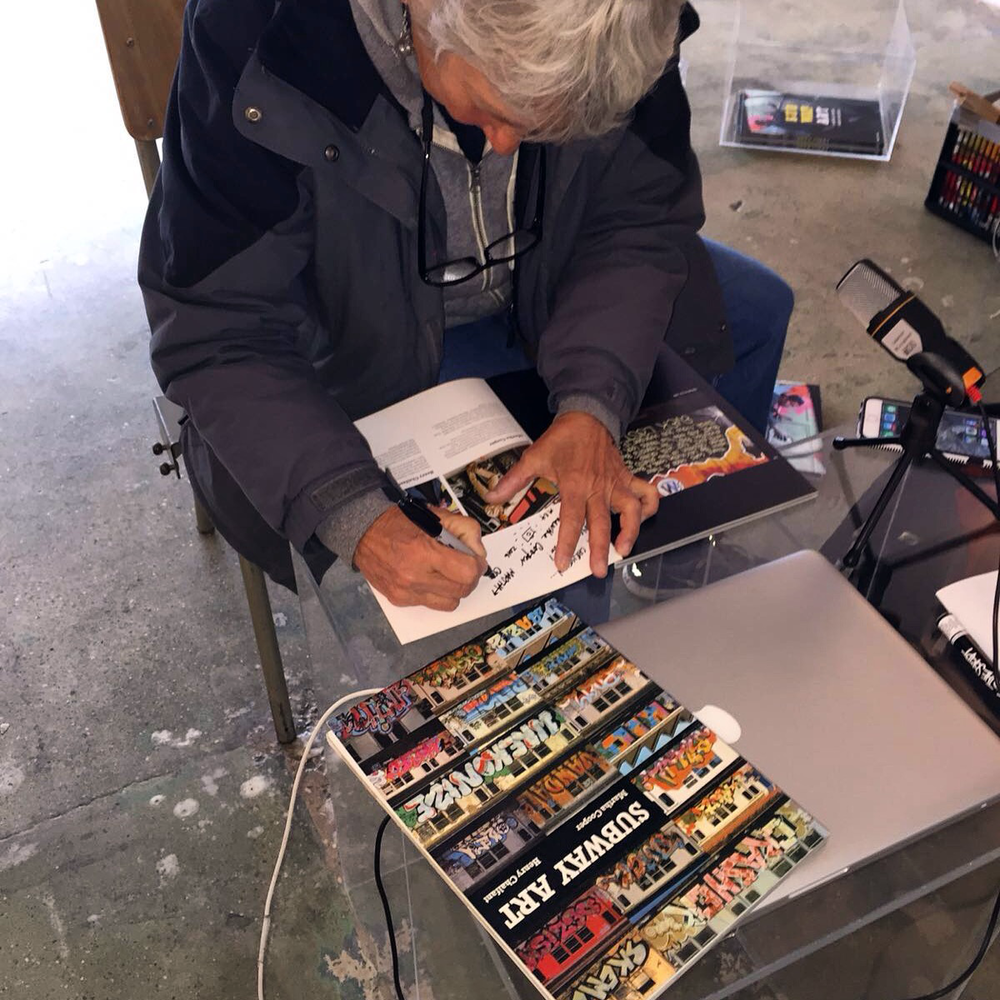
Pictures by Christian San Martin
So when the book came out, what was the response?
Uh oh… who can remember… (chuckles).. remember that was ’84! You are asking to go back a long time!
I would say it was a tepid response. First of all when the first edition came all of the covers fell off. They did not do a good job of gluing . It was printed in Japan but published in England by Thames & Hudson. It was a much anticipated first edition that was supposed to come out for Christmas. And the books arrived and the covers where glued on the spine but not sewn and all the covers fell off! I still have a few of those which was an incredible disappointment. So we couldn’t launch the book and we had to trash that edition and they printed again.
All the covers of the second edition ALSO fell out of the second printing but they lasted a little bit longer. I guess it wasn’t a very good way of binding a book. The first edition is small and paperback, smaller than this ( points at my copy of Subway Art )… my guess is this binding is better ( laughs ). It all peeled off.

Was it hard to get it published?
Yeah it was very hard to get it published! We had about twenty rejections from American publishers… we kept getting introduced to publishers like Abrahams and Rizzoli. We had a weird made up mock up, because we felt like we couldn’t just describe it we had to show them.
It was quite a large mock up that we in fact wheeled around, we had a special case made for it. Henry still has it in his studio. We would get initial positive reaction from some editor who would get exited about it but then when he would take it to their editorial meetings they all shoot it down.
So, there had been one previous book, that Jon Naar had done, a photographer with Norman Mailer called “The Faith of Graffiti” and I guess that had not done well so people kept referring (to that book) “Oh well… nobody’s interested in that!” His pictures were good but the trains weren’t as developed when he was shooting and they weren’t as… the Wildstyle and everything… they were much more primitive. An interesting book, hard to get now!

So… we decided to take it to the Frankfurt Book Fair. We paid ourselves, bought the tickets, flew to Germany and wheeled it around the Frankfurt Book Fair and found Thames & Hudson. That was lucky!
We were very aggressive in the marketing and weathered many many rejections and actually wound up spending quite a bit of money to go to Germany and then to England for the launch of the book.
So basically it was produced in Europe and re-imported to America!
Yeah it was and the bad thing about that was that we had a terrible contract because the American sales were considered foreign rights.
Nobody expected it to sell so many copies… the original edition sold around half a million copies which is probably the best selling art book in the history of the world. Nobody thought it would gonna sell well, the initial print run was 5000 and our contract didn’t have a clause that said: Well, if it sells more than 5000 you are getting better royalties… and the American edition was considered a foreign edition so the royalties were like a penny per book each which is ridiculously low.
So, we did not get rich!
So when did you realize you were onto something?
I basically gave up on Graffiti after the book was published. It didn’t seem to be going anywhere and I needed to keep my career on track and I began doing all kinds of other assignments. It wasn’t until around 2002 or something that somebody contacted me from Germany and wanted to put together a book of my old photos that turned into a book called “The Hip Hop Files” and I sort of jumped back into the scene. They brought me to Europe and when that book launched we went to something like 20 cities in something like 20 days on a kinda whirlwind tour and then I really saw the effect. Up until then I didn’t really understand.

When was that?
That book came out in 2004, so, from ’84 till 2004 there was not a lot of action! One other thing was that in the United States they kept the book behind the counter under lock and key because kids stole it and so when you went to a book store you had to actually ask to see it! So of cause kids were not really buying it and it wasn’t really on display… we got royalties but we didn’t get much!
When I first visited NYC I expected it crazy covered in Graffiti, but of cause there has been a crackdown on it. How do you feel about the scene today?
I am not drawn to going out and shooting the way I used to be and, in fact, I am originally from Baltimore. I decided I did want to do more street photography and I decided I wanted to do it in Baltimore. I actually bought a little house in the neighbourhood of The Wire and even though I live in New York I have been going back and forth.
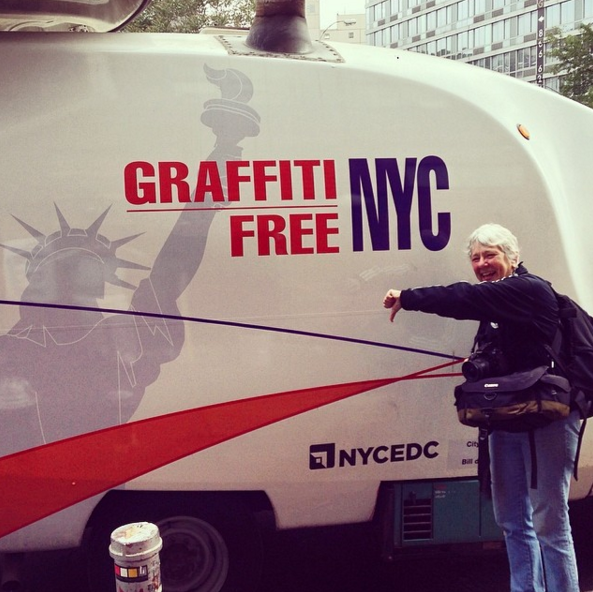
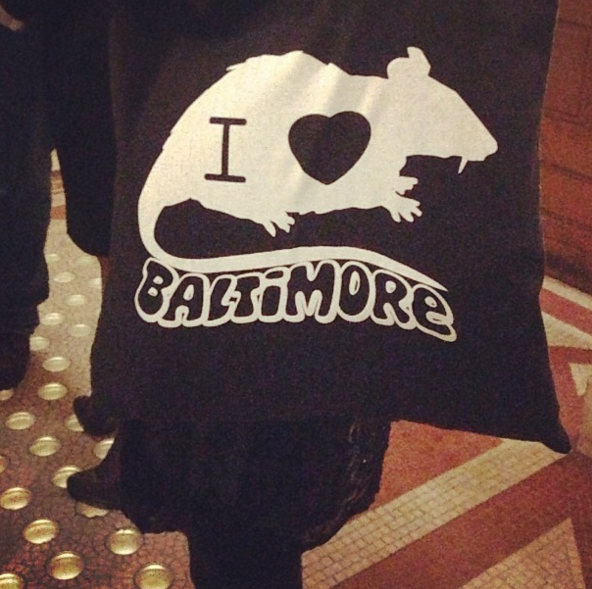
That project is pretty much finished. Because New York seemed kinda squeaky clean and not as interesting to me although probably there are pockets of good street photography subjects but remember: Everybody has a camera now! The only reason we are still talking about this is that there were so few people with cameras who were documenting (back then).


Today everybody is taking pictures and street art photographers are a dime a dozen, there are so many of them. I don’t want to be just another street art photographer.
You are exhibiting in a Street Art gallery. There always has been a bit of tension between Writers and Street Artists. At the same time I feel Street Art is a bit of an extension to Graffiti in it’s own right, so how do you feel about that?
You know I am giving a talk tomorrow right? A large part of the talk talks about the difference what I consider Street Art and Graffiti. With Graffiti basically being lettering and Street Art basically being images. But there is a huge cross over! Many Street Artists tell me that they began by doing letter Graffiti and they are very good at lettering.
I flew here from Bangkok for example and Nychos, who I consider one of the most amazing spraycan artists out there, went out there almost every night bombing and writing his name. So there’s not a hard line between the two. There is tension. And probably the tension has to do with Graffiti Writers feeling that Street Artists have appropriated their culture and they are making a lot more money from it. Why they getting the fame when the Graffiti Writers are the ones that started it?
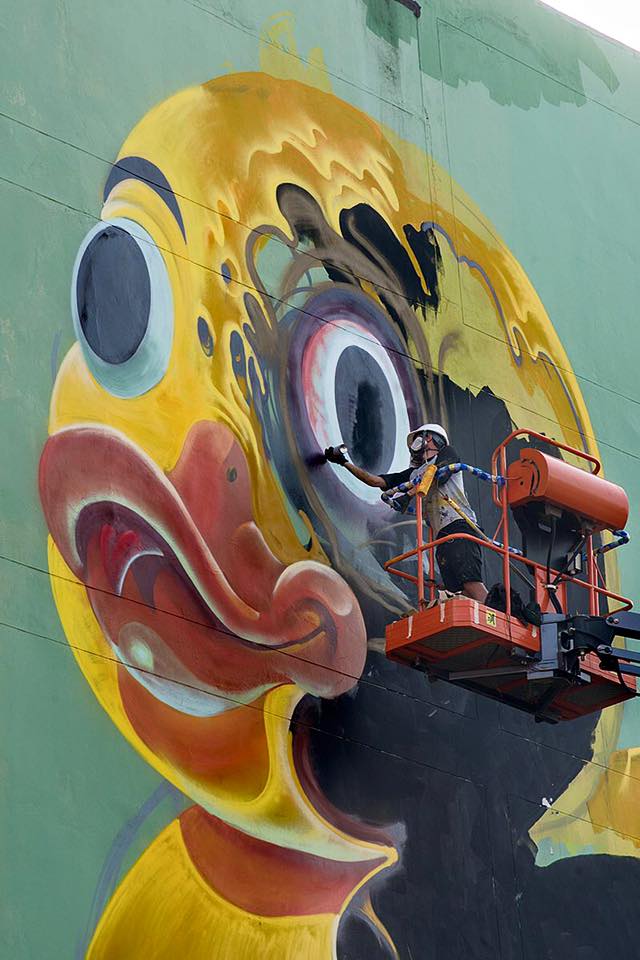
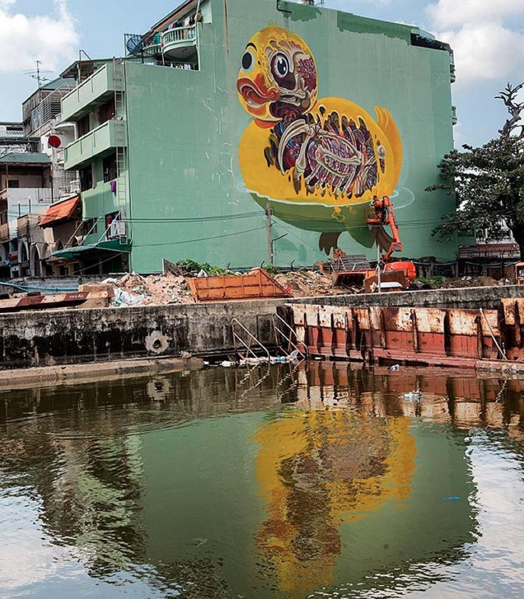
How do I feel about it? I am sort of just interested in following it, I don’t really have feelings about it. The whole thing is very interesting to me, I want to see where it’s going. It keeps going and going and going. Just when I think can’t get any bigger it goes further. I don’t think there is a country in the world that doesn’t have Graffiti. Last year I went to this Tahiti Graffiti (event) as a judge, it’s call ONO’U. It was a contest, I was a judge and these were Graffiti Writers. Now they had also Street Artists painting some walls but the contest was for hardcore Graffiti. And it was sponsored by the Tourism Board!
Would you expect that a country like Tahiti could even imagine that Graffiti would somehow bring people there? They have the most amazing scenery in the world, you wouldn’t think that there would be any reason! And they have contacted me this year and said they are doing it again and I think that was the second edition already so apparently it was successful. I can hardly imagine somebody booking a flight to Tahiti to look at walls.
I’d love to go! But it’s a bit far away… Talking about Street Art and Graffiti… what did you think about the Banksy takeover of New York? I am still amazed he didn’t get busted…
Well did you see the picture we used for this card? It’s from that.
I wasn’t there the whole time unfortunately, I was one of the many people that was trying to get those pictures. The whole thing was fascinating. He had the whole city talking about it, it was absolutely amazing. Very very clever. Some pieces cleverer than others but everybody knew about it. I recently instagrammed a piece, mostly the pieces didn’t last for one reason or another. There were so many different hilarious things that happened. I remember seeing these guys out in Brooklyn with a piece of cardboard and they were holding it up in front of the wall trying to get people to pay them money to being able to take a picture.

Where’s the card… I love this picture and I love the piece… because it’s a piece about Graffiti. As soon as I heard he did a piece in the Bronx I ran up to the Bronx even though I was leaving for Europe that evening. But I REALLY wanted the Bronx picture. I didn’t even know what the piece was. And somebody dragged that couch in front and while I was there the owner of the wall started putting a big piece of plexiglass over that piece. So Banksy must have been just laughing his head off.
I still can’t believe the NYPD wasn’t on it, trying to bust him!
Ah they might have been but maybe… who even knows… was Banksy actually there? Did he send out people to do it? I don’t know the whole story.
Wait, I want to show you this one picture that I recently took, because I passed by a piece that I had seen that he had done and it had been appropriated by this store that owned the wall, which is Zabar’s. Zabar’s is a well know delicatessen and they put a sign up: “Banksy comes to Zabar’s” ( laughs ).

They put a piece of plexi over it and they were so proud! Probably they never heard of Banksy before that happened. And then, when I went into Zabar’s they had a picture hanging at the cash register of the wall before the plexiglass has been put over it. So they were very very proud of this piece!
I think it’s great how you embrace new technology. Photographers normally turn up their noses at Instagram and iPhone photography…
No, I love Instagram! I love iPhone photography! I wish I could just do the iPhone and not have to carry around heavy camera equipment. I am totally digital! But I am not that good at it… I wish I was better at it. Here is the Zabar’s piece… look there is a little sign here: “Help Zabar’s to protect this unusual work!”
So there are 45 comments, which is a lot for me! You might have thought people would be really cynical about this but people are saying things like: Look, you know what, we don’t get the chance to see a Banksy because they always get wiped out or taken so this is one where you actually can still see it.
It’s ridiculous his work is so clever commenting on consumerism, yet his pieces become instant collectables with people tearing down houses to get his artwork. It’s crazy…
He is very clever, what can I say… I admire his cleverness. Of cause he is not the most sophisticated artist, well he is sophisticated, but I mean in terms of the technique. He is a really good artist.
Do you think Blek Le Rat is a bit mad about Banksy’s fame?
You know I haven’t kept up with Blek’s recent work so… oh but I am sure Blek is totally pissed off. That’s sort of like the Graffiti Writers not wanting the Street Artists to succeed.
I think the whiners really don’t understand how the art world works. It really isn’t about who started something or who was first. It’s like a whole culmination of other things.
You have been travelling all over the world to take pictures. Any places you still want to go?
Yesterday an invitation came in for China… I haven’t been to China! I wrote right back immediately and said: “Yes I’d be interested in that”. Yeah, there are few places out there…
So are you planning to create a Subway Art for our generation?
No. I don’t have any plans for anymore books. Although I might go back, I have huge archives of old pictures I have never done anything with because I picked out the best ones. But there are lots of ones that look more interesting now that so much time has passed. So I might go back and do… I don’t really have plans for more books. Books are kinda over. As a Blogger you understand that!
To be able to take a picture and immediately post it, I don’t have to ask anybody’s permission, I don’t have to pitch the story to editors. I spend a lot of time pitching stories that never went anywhere… very frustrating. Look, I just posted this how many minutes ago… 38 minutes ago and it already has 484 likes. I mean, I feel powerful being able to do that and it’s a lot of fun!
To me this is like a great thing and it’s free. Ok you need the iPhone but the quality of the photograph from the iPhone is really pretty amazing. This is the 6, there are like 4000 pixels which is pretty much what I had with my first digital SLR and I did a book called “We B*Girlz” with that camera. Which had no more pixels than this ( shows her phone ). I mean that’s amazing! Mind you, I have my Nikon in here, just in case! ( Laughs )

You mentioned the “We B*Girlz” book. Was gender ever an issue when you got deeper into the scene?
No! I can’t say the other thing. I think the Graffiti Writers respected you because of your skills. I was a skilled photographer and I gave them pictures and they wanted those pictures. Because photography was always… if you look right straight back… the picture of Dondi in his room… here I show you in here… this was when I first met Dondi it was before I even went out to look at trains. And I spend the day with him and his friends… these were pictures he took himself with like a cardboard camera. So the fact that I could take way better pictures and I always tried to give them to them kinda made me accepted.
Are you still in touch with the old writers?
Yeah, a lot of them actually. I went to Venice for the Biennale there was a separate Graffiti exhibition and Futura was part of that, Doze was part of that.
How do you feel about Futura, I am a big fan. He is just one of the old legendary writers who is still doing it!
Yeah he is still out there! He just painted the Houston Bowery wall which is the same wall which Keith Haring first painted. It’s like a performance to go out on Houston Street and paint and he did a good job with that wall!

Any idea why Futura is still so successful. What gave him his edge?
I think he knew more about the art world, he understood the art world better.
Yeah I saw pictures of him hanging out with Madonna at Studio 54. Were you ever part of that scene?
Studio 54? Every night, but because I was working for the newspaper. The New York Times was a Murdock newspaper and they covered Studio 54 every night. It was all about the celebrities.
Do you have any crazy celeb stories then?
(Laughs) No, no crazy stories!
Really looking forward to the show, was there a special way you curated it?
Well there is a bit of a timeline! Because I don’t want to just be considered a Graffiti Street Art photographer. So it has a few of the older pictures in it. But it also has these Tattoo pictures that preceded the Graffiti pictures.

Any final sage words of advice for any budding photographers?
Ahhh… for photographers ( laughs )… it’s a tough career! Good luck!
So what’s next for you if you are not planning any new books. Just happy snapping away?
I figure I am doing a victory lap! I am enjoying travelling around, seeing what’s out there… that’s about it!
Thank you very much for the interview!

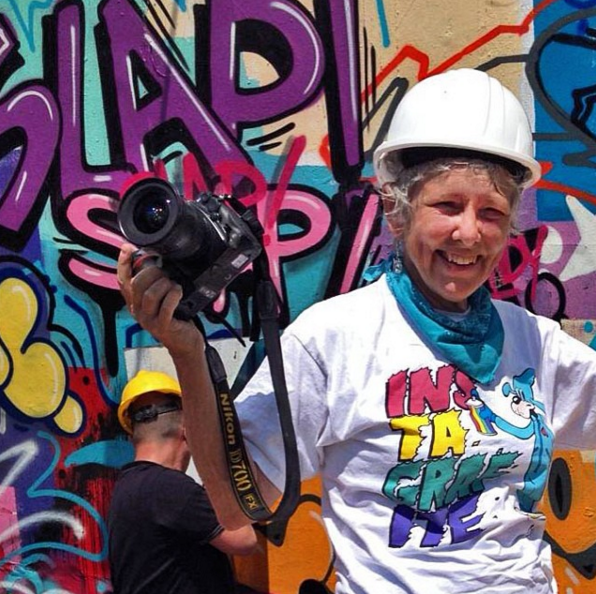
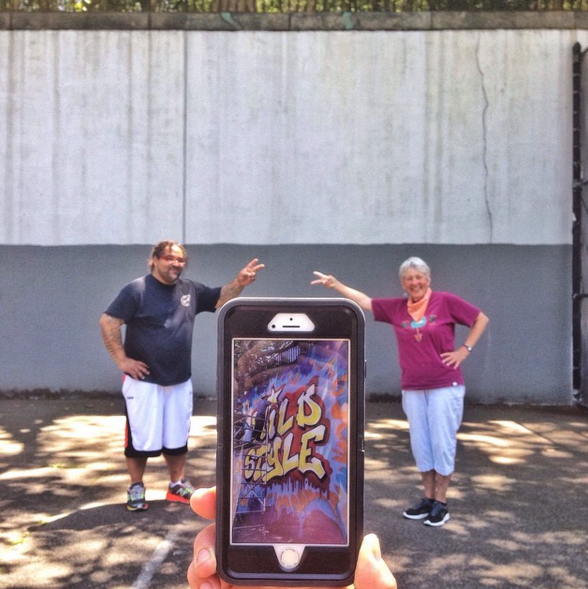
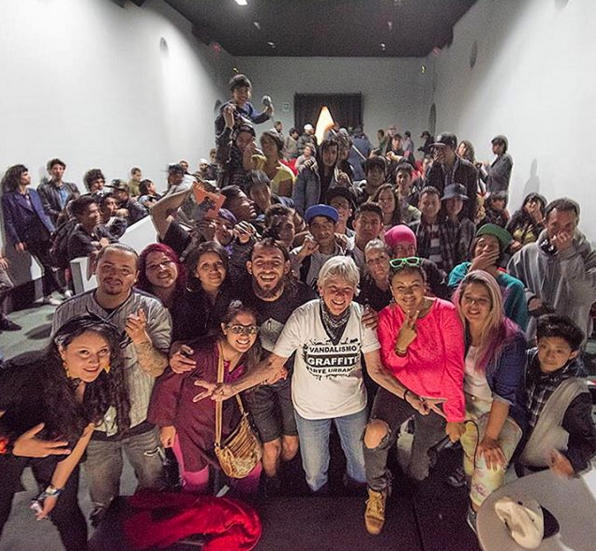
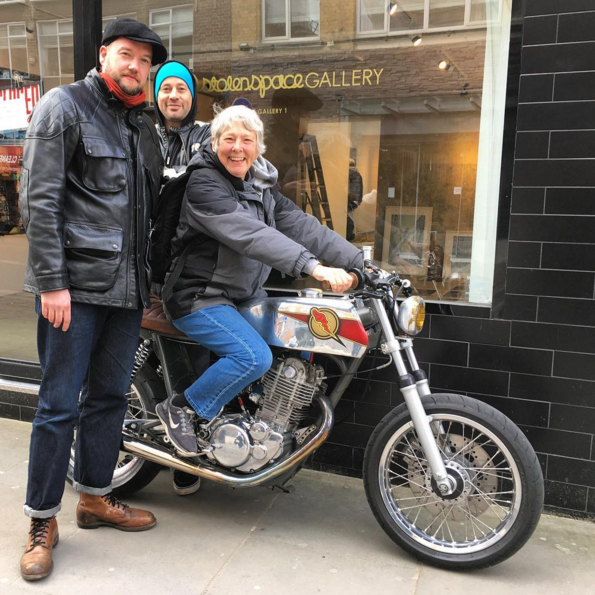
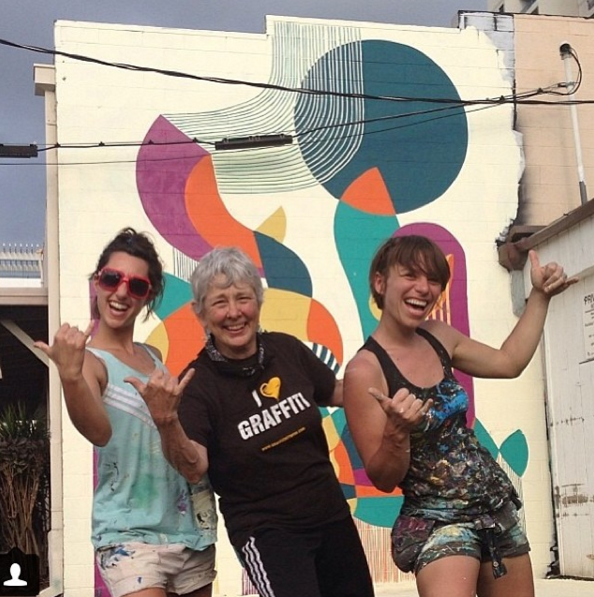
All images from Martha Coopers Instagram account @marthacoopergram
Pictures taken at Stolenspace during the interview by Christian San Martin
“Life Work” – Martha Cooper | 5th Feb 16 - 28th Feb 2016
Stolenspace Gallery London, 17 Osborn Street, London UK E1 6TD
